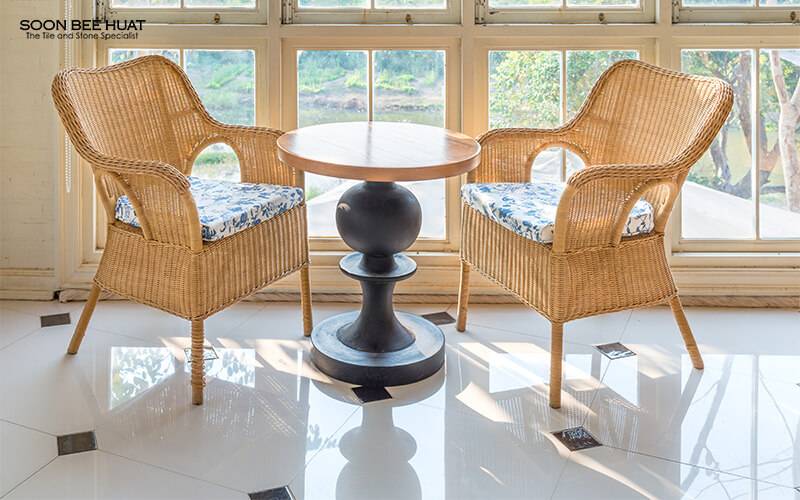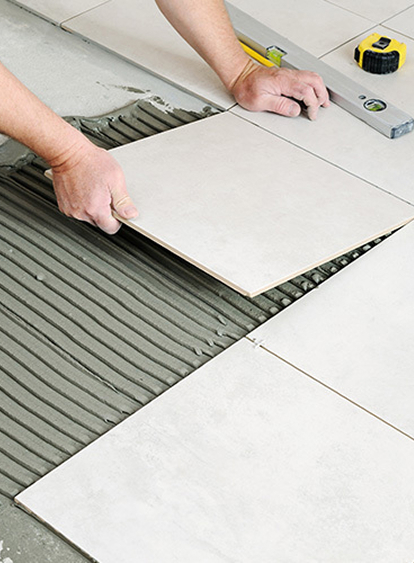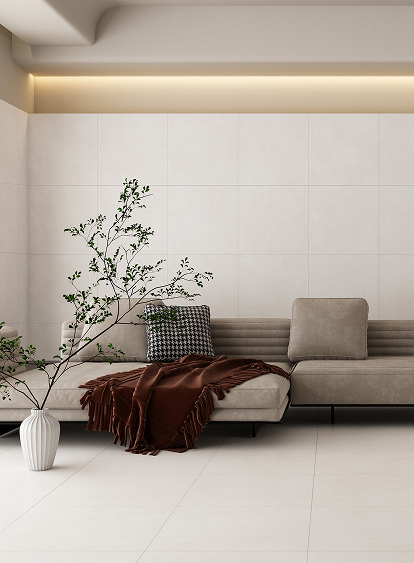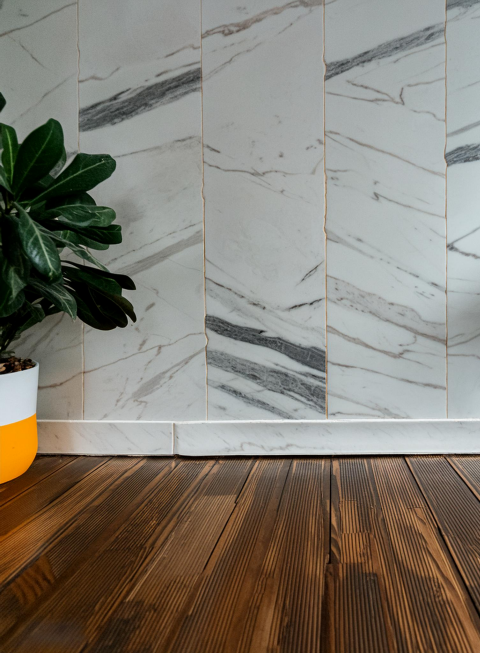
Key Takeaways
- Material & Durability: Ceramic tiles offer versatile designs, while homogeneous tiles provide uniform strength and long-lasting durability.
- Design Limitations: Homogeneous porcelain tiles have simple patterns, whereas ceramic tiles allow for more elaborate, colourful designs.
- Cost & Maintenance: Ceramic tiles are budget-friendly but may require extra care; homogeneous tiles are pricier but low-maintenance and ideal for high-traffic areas.
Planning to refresh your home’s look? One of the biggest decisions you’ll face is choosing the right tiles. The question many homeowners in Singapore ask: between ceramic tiles and homogeneous tiles, which is better? Both options are popular for their durability and versatility, yet they differ in composition, cost, and style.
Let’s explore the differences so you can pick the perfect tiles for your space.
Disclaimer: The term “homogeneous” is sometimes loosely used to describe porcelain, but this isn’t entirely accurate. Porcelain is a heavy-duty material suitable for floors and walls, whereas homogeneous tiles refer to the uniformity of material throughout the tile. Homogeneous porcelain tiles typically have limited design options—mostly simple patterns like dots. Fancy designs, such as wood or intricate marble looks, are generally not available in homogeneous tiles because it’s technically difficult to produce these designs throughout the tile’s thickness.
1. Material Composition
Ceramic tiles are made from a mixture of clay and water, then fired and glazed for a polished finish. This process allows for a wide range of colours, patterns, and textures. In contrast, homogeneous tiles are made from a single, uniform material throughout, giving them a dense, robust structure. This means even if they chip or scratch, the colour remains consistent, making them ideal for high-traffic areas.
2. Strength and Durability
Durability is key when it comes to tiling. Homogeneous tiles are highly resistant to wear, chipping, and heavy foot traffic, making them perfect for kitchens, hallways, or commercial spaces. Ceramic tiles, while durable, perform best in areas with low to moderate foot traffic, such as bedrooms, dining rooms, or accent walls. This is why many homeowners carefully compare ceramic tiles vs homogeneous tiles before deciding which rooms to tile.
3. Aesthetic Variety
When it comes to looks, ceramic tiles vs homogeneous tiles differ significantly. Ceramic tiles shine with endless design possibilities, from marble-look finishes to bold geometric patterns. Homogeneous tiles, meanwhile, offer a sleek, minimalist vibe with subtle textures and neutral tones, a favourite for modern, understated interiors.
4. Maintenance and Cleaning
Both tile types are easy to maintain, but homogeneous tiles pull ahead in wet areas. Being less porous, they resist stains and water, making them excellent for bathrooms or kitchens. Considering ceramic tiles vs homogeneous tiles helps you choose the right finish for ease of maintenance.
5. Cost Considerations
Budget also often plays a big role. Ceramic tiles are generally more affordable, making them ideal for large spaces or DIY projects. Homogeneous tiles cost more upfront but reward you with long-term durability and low maintenance, making them a smart investment for the future. This is another reason why the debate over ceramic tiles vs homogeneous tiles continues among homeowners in Singapore.
Choosing between ceramic tiles and homogeneous tiles ultimately depends on your priorities—style, cost, or durability. Whether you want bold designs on a budget or ultra-durable tiles with a minimalist feel, understanding these differences will guide you to the right choice.
Still undecided? Soon Bee Huat offers expert guidance and a wide range of floor tiles to help you find the perfect fit for your home. So, if you need help choosing, contact us today for personalised recommendations and high-quality tile selections.





.jpg)